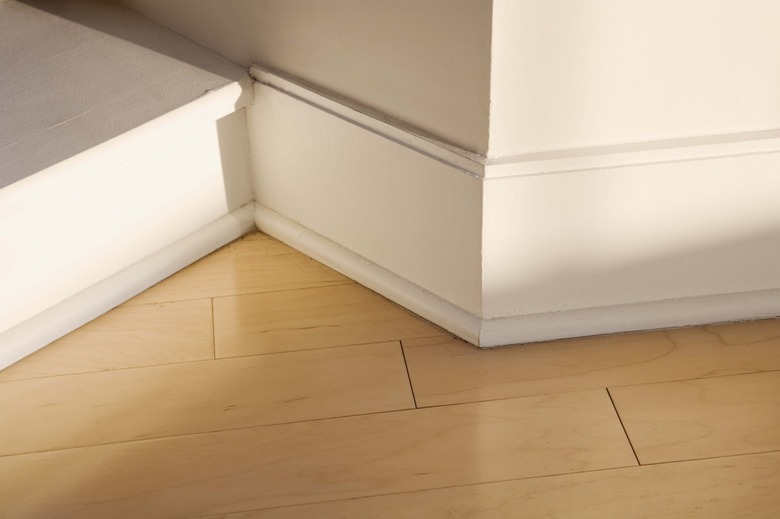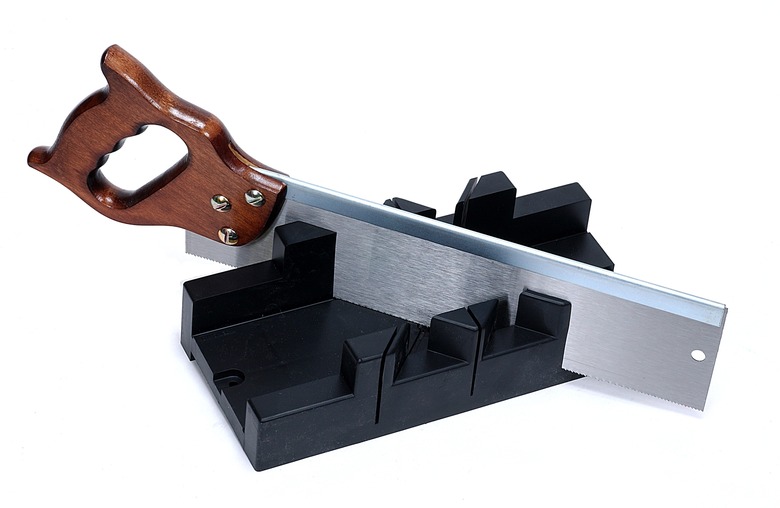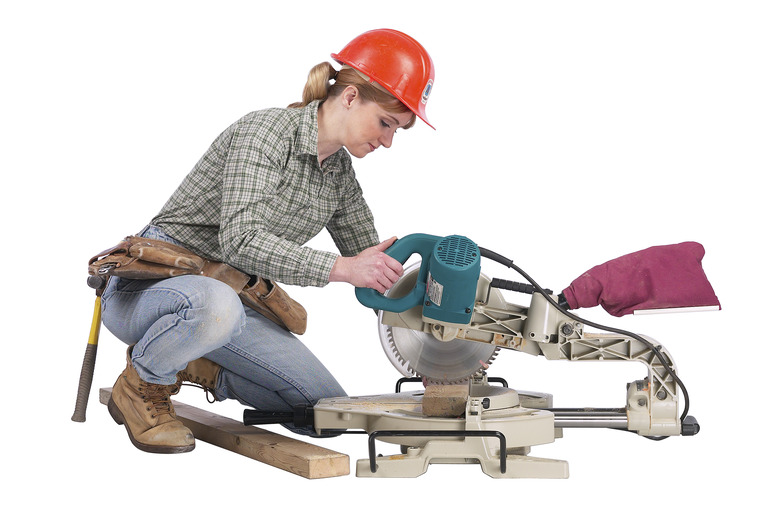How Big Of A Miter Saw Cuts 6-Inch Baseboards?
A miter saw is the tool of preference for making angled cuts in baseboards. The size of saw required depends on the width and thickness of the baseboard stock that you are installing. Since no wall is perfectly squared with its intersecting counterpart, the ability to make precisely angled cuts is key to achieving a finished, professional look devoid of annoying gaps. Choosing the correct tool will also depend on your budget and where and how often the 6-inch baseboard application will be used.
The Miter Box
The Miter Box
The traditional miter box with accompanying handsaw is not designed to deal with 6-inch wide baseboard stock. The wood will not fit in the box if it is stood up against the fence, and many hand miter boxes are not wide enough to accommodate nested 6-inch boards laid flat within the box. There are boxes that are L-shaped rather than U-shaped, but cutting the precise angles needed for wider baseboards is still extremely difficult using hand tools.
Compound Miter Saws
Compound Miter Saws
Powered compound miter saws are available in 8-1/2 inch, 10-inch and 12-inch models. For precise cuts, a 6-inch baseboard needs to be laid flat in an 8-1/2 inch saw to slice off a partial degree. The larger 10- and 12-inch models allow the 6-inch board to rest upright against the miter fence. Visualizing a cut is therefore easier since this is the same orientation in which you will subsequently attach the baseboard to the wall.
Size and Scale
Size and Scale
The 10- and 12-inch compound miter saws have larger scales that make precision cuts easier to accomplish than the smaller-scaled 8-1/2 inch models. If you routinely install baseboard, a larger saw will make your working life easier. Since the 12-inch saw is heavier to lug around a building site, you may wish to purchase the lighter 10-inch saw. A 10-inch saw will effectively and accurately cut 6-inch baseboards without the burden of added weight.
Add-Ons and Features
Add-Ons and Features
The 10- and 12-inch compound miter saws can accommodate a variety of add-on options and features that the smaller models may not be designed to use. The variety of blades available for the larger saws is greater. Optional precision angle finders, extendable workpiece supports, laser blade guides and quick and easy mounting capability on a universal miter saw stand make the saws versatile for changing workplace sites. A 10-inch compound miter saw will effectively cut your 6-inch baseboard and cost less than a 12-inch model. Choose the saw that best meets your budget and your work.


